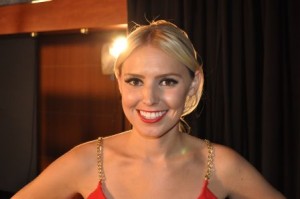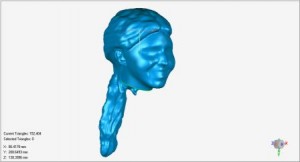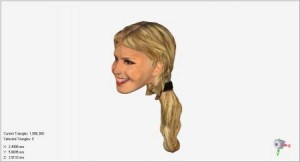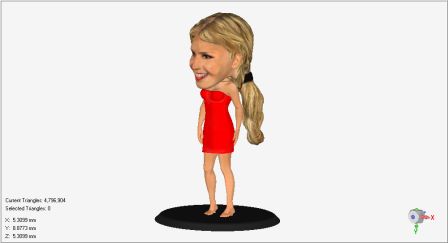November 11, 2024
Mining engineering firm opens new service segment thanks to 3D scanners See the articleIn my current job as an applications specialist with Creaform, I’ve been asked to scan, inspect and reverse engineer a lot of very different mechanical parts, using any and all devices in the range of 3D measurement solutions manufactured by Creaform. Some scan jobs can take place in harsh conditions and be really physically demanding. However, some other projects can be, let’s say … more entertaining than others! In both cases, I always love my job, but can’t help but envy some of my colleagues when they get an exciting project.
That was the case when a friend of mine got assigned the task of 3D scanning the face of a famous TV show host with our Go!SCAN 3D white light 3D scanner in order to create a customized bubble head doll. It did sound like a fun project, but more importantly, the host was Jenn Barlow!!!
Jenn Barlow is an automotive industry expert and self-proclaimed tech-lover. She currently hosts and produces the Emmy-nominated and nationally airing television show BOYS TOYS on Wealth TV, where she gets to travel around the globe to find the coolest toys for big boys. From exotics cars to unbelievable aircrafts and even the newest guy gadgets, Jenn seeks out which machines are unique to the consumer market and worthy of your hard-earned money.
Even though I didn’t get the chance to meet her and scan her lovely face, I had to make a customized bubble head doll from the 3D scan file. Thanks to the Go!SCAN 3D, the acquisition process is very easy and fast, and the model doesn’t have to stand still for too long… even if I know that my colleague would not have minded in this particular case! 😉
OK, back to the project: I had to create a model that could be printed using a polymer 3D printer. So I simply took the mesh output (.stl file) from the Go!SCAN 3D and merged it to an existing bubble head mesh model. Then, I modified it to add the internal geometry which will allow the head to be supported by the doll’s body.
Finally, another of my colleague used Pixologic’s Zbrush software in order to add color to the doll. By using some pictures taken after the scanning process, Zbrush can create a color model which will be used by the 3D printer. The printer then colors the polymer powder used on the outside of the model to match the desired image…in this case a very pretty image! 😉












